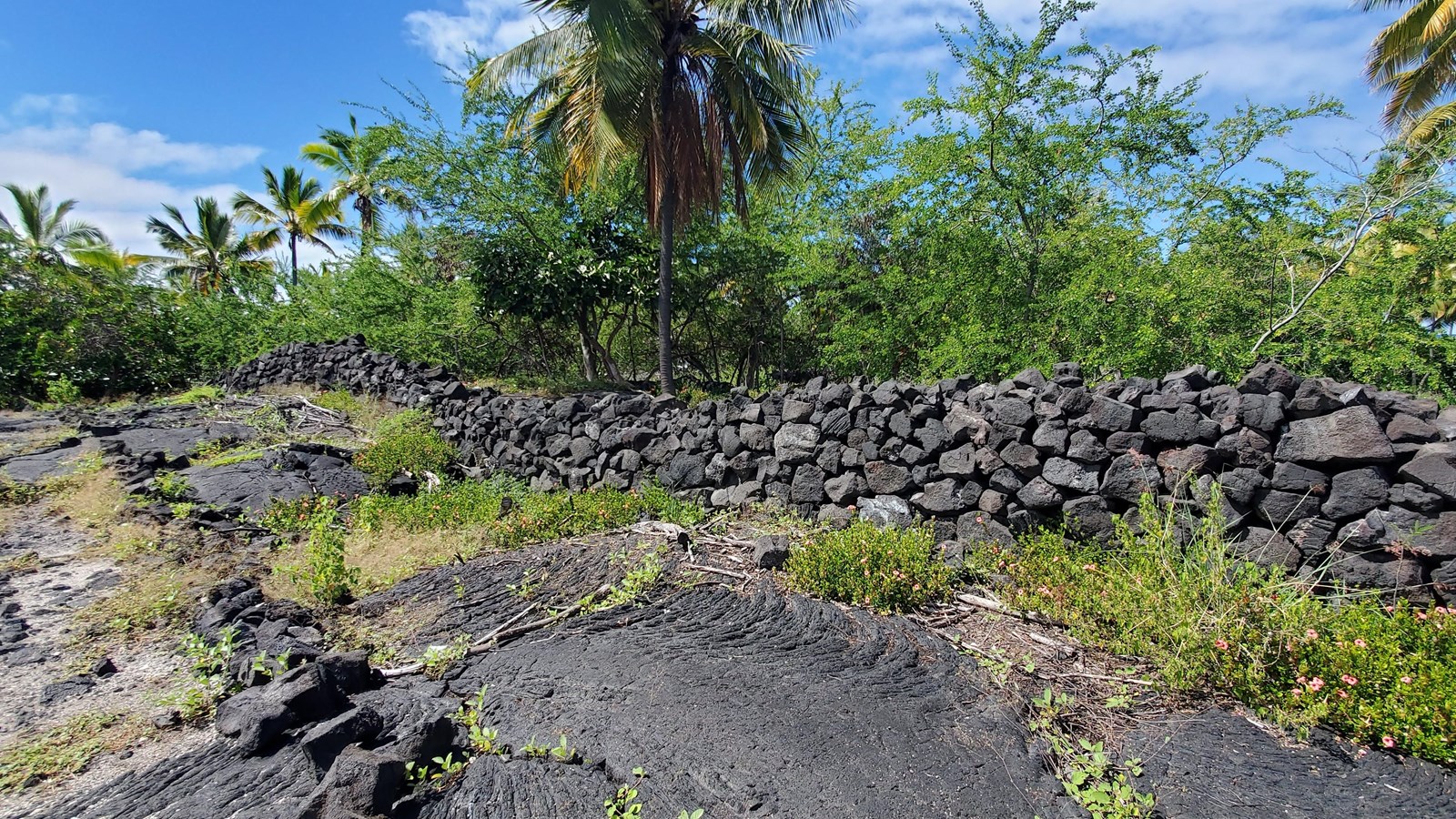Last updated: November 16, 2021
Place
C - Stone Walls & Curbstones

NPS
Historical/Interpretive Information/Exhibits
Notice the stacked stone walls on the makai (ocean) side of the trail. These walls are constructed using uhau humu pohaku or traditional dry-set masonry. Instead of using mortar or cement between stones, walls are held together by friction, requiring precise placement of stones. Walls such as these are used to divided property and are built as boundary markers. Enclosed stone walls seen here and along the trail were garden plots or animal pens. Networks of stone walls, called kuaiwi, could also serve as raised trails or causeways themselves.
You may also notice that stones line the edges of the trail. These curbstones were part of improvements made to the 1871 trail when it was widened to easily accommodate two horses at one time. The curbstones delineated the trail making it easier for pack animals to follow it without constant guidance from their riders. Around the island, these types of “two horse trails” were constructed during an 80-year period lasting from 1841-1918. In 1918, the section north of Hōnaunau underwent a further evolution when it was modified to accommodate wheeled traffic. You might have even driven on it on your way to the park! However, this section south to Hoʻokena was never modified for motorized vehicles and remains a historic trail, frozen in time.
